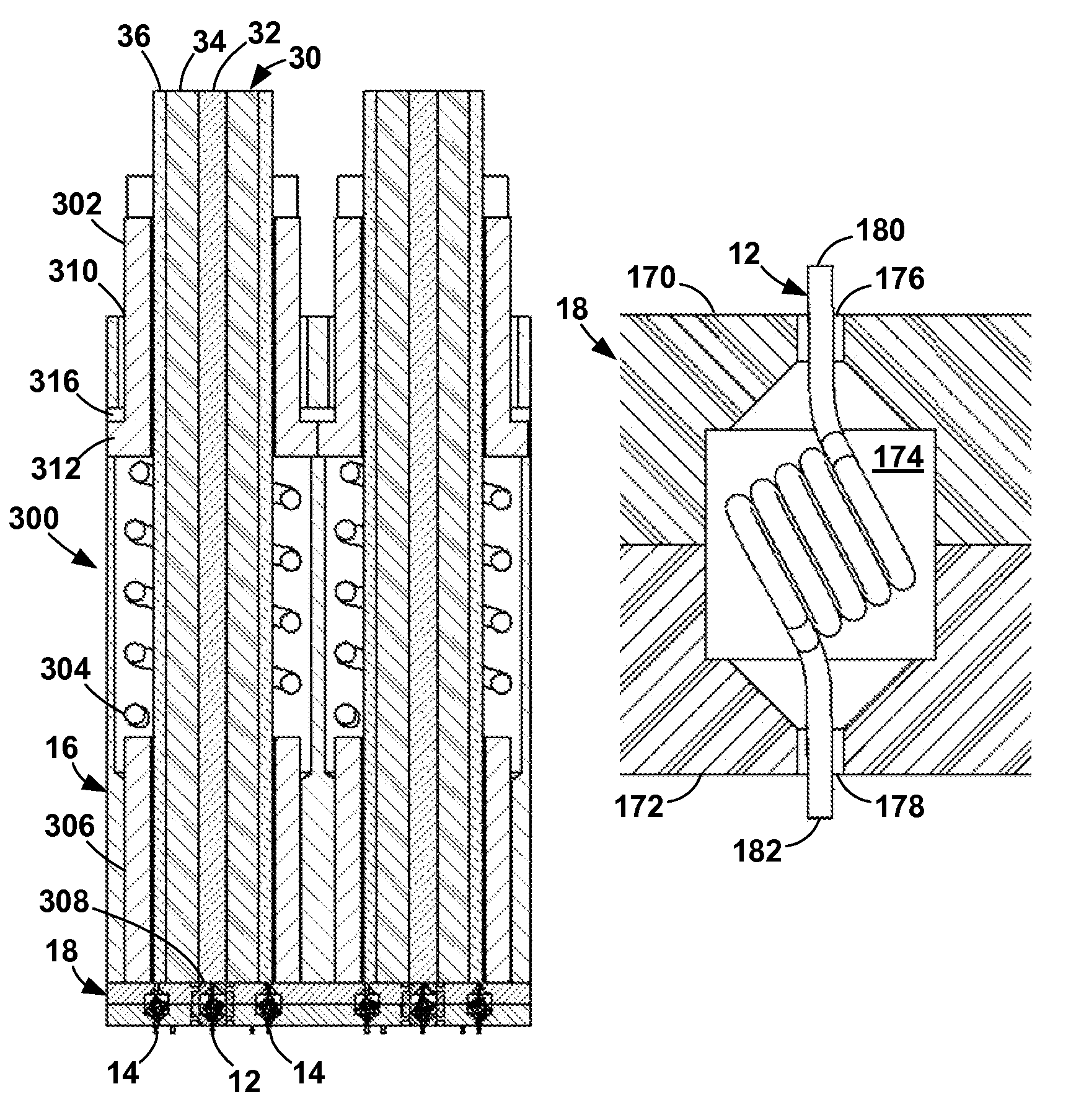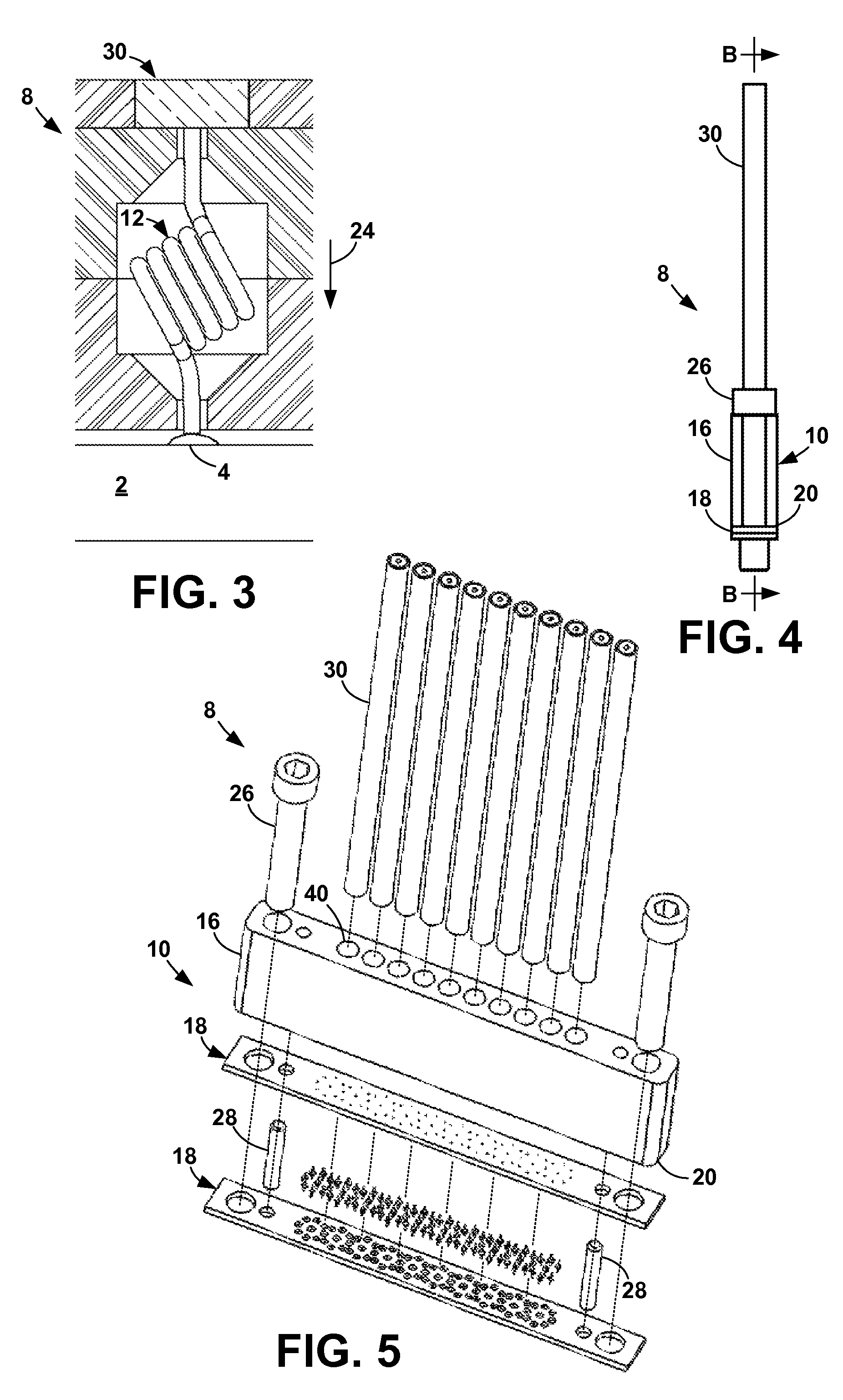Controlled-impedance cable termination using compliant interconnect elements
a technology of compliant interconnect elements and controlled impedance, which is applied in the direction of coupling contact members, coupling device connections, coupling protective earth/shielding arrangements, etc., can solve the problems of reducing the density capability of connections, high frequency attenuation, and difficult to design the best possible controlled impedance environment, so as to minimize the detrimental electrical effects of termination
- Summary
- Abstract
- Description
- Claims
- Application Information
AI Technical Summary
Benefits of technology
Problems solved by technology
Method used
Image
Examples
Embodiment Construction
[0086]The present application hereby incorporates by reference U.S. Provisional Patent Application No. 61 / 550,543 in its entirety, on which portions of this application are based.
[0087]The present invention is an apparatus and method for terminating a controlled-impedance cable that minimizes detrimental electrical effects of the termination by using a compliant or compressible contact element at the point of termination. With the present invention, impedance mismatches are minimized, allowing the cable to be more useful in high-frequency signal ranges. The present invention can be used with any cable structure where the impedance between the inner conductor(s) and the ground shield is controlled.
[0088]In addition, the present invention increases the density at which the controlled-impedance cables can be used. That is, with the present invention, more cables can be terminated in a given amount of space than with terminations of the prior art. Further, the interface between the comp...
PUM
| Property | Measurement | Unit |
|---|---|---|
| angle | aaaaa | aaaaa |
| angle | aaaaa | aaaaa |
| impedance | aaaaa | aaaaa |
Abstract
Description
Claims
Application Information
 Login to View More
Login to View More - R&D
- Intellectual Property
- Life Sciences
- Materials
- Tech Scout
- Unparalleled Data Quality
- Higher Quality Content
- 60% Fewer Hallucinations
Browse by: Latest US Patents, China's latest patents, Technical Efficacy Thesaurus, Application Domain, Technology Topic, Popular Technical Reports.
© 2025 PatSnap. All rights reserved.Legal|Privacy policy|Modern Slavery Act Transparency Statement|Sitemap|About US| Contact US: help@patsnap.com



